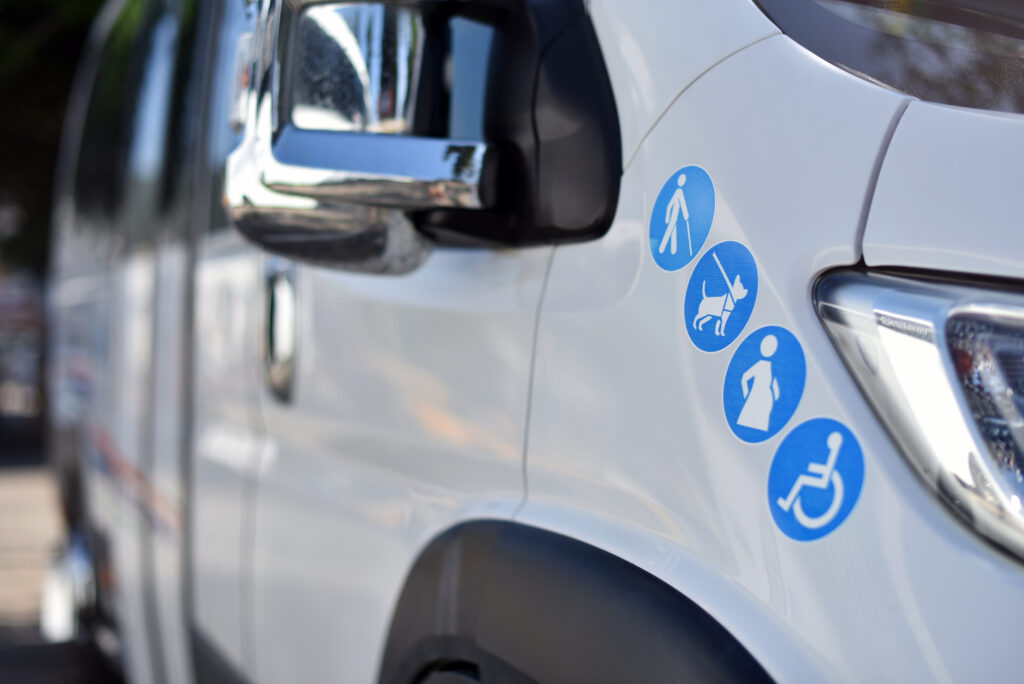The world of professional HGV driving is incredibly lucrative, with high salaries and plenty of job opportunities to choose from.
But before you can get behind the wheel and become an HGV driver, you’ll need to complete both theory and practical HGV driver training with a trusted training provider.
If you’re eager to fully understand the ins and outs of the HGV training process and everything you can expect from a HGV training course, keep reading to find out all you need to know.

What’s involved in HGV training?
Just like learning to drive a car, HGV driver training involves plenty of hands-on training and preparation, a theory test, and a practical examination at the end of the course.
Step 1 – Pass your medical
To ensure you’re fit to drive an HGV safely on the road, you’ll first have to undergo a medical exam.
Your medical will be conducted by a doctor, who will then fill out an official DVLA form outlining vital health details – the questions they ask will help them establish whether you have any conditions that may hinder your ability to drive safely, such as sleep disorders or neurological problems.
Then, it’s up to the DVLA to give you the green light to begin your HGV training.
Step 2 – Pass a theory test
After getting the all-clear from the DVLA, you can start looking towards your theory examination – revising for this can be done even before you’re cleared to drive if you want to get ahead of the game.
The theory test is split into two: a multiple-choice section to assess your knowledge of the road and the hazard perception, which evaluates your understanding of potential hazards.
You must pass your theory exam to undertake your practical test – for more information about the theory section of our training courses, take a look at our HGV Theory Test Explained blog.
Step 3 – Pass your practical driver training
Once you’ve completed your theory, you’ll start your practical training and learn how to operate a heavy goods vehicle correctly.
You’ll only learn from a qualified and seasoned instructor, who has “been there and done that” – under their guidance, you’ll gain the essential driving skills required to pass your practical test.
After passing your practical examination, you’ll gain your HGV licence and become a newly qualified driver ready to embark on the final part of training and enter the exciting and satisfying world of HGV driving.

Step 4 – Do your CPC training
Your HGV training course concludes with the completion of your initial driver CPC, also known as a Driver Certificate of Professional Competence – all HGV drivers must complete their CPC before applying for professional driver roles.
The CPC qualification is split into two modules: the case study test and the practical demonstration test.
After passing, you’ll be issued a Driver Qualification Card (DQC), valid for 5 years – after which you’ll have to complete driver CPC training again.
Is HGV training hard?
For many, the thought of tests often invokes feelings of dread – however, with the correct preparation and guidance from experienced instructors who know how to help you pass with flying colours, the process is made much easier.
Similarly to your car test, the following will make your HGV training course feel like a breeze:
- Effective revision materials
Official revision software that explores everything you need to know for your theory test should support you in passing the first time – this can include the official DVLA pack, apps or textbooks depending on your preference. - Quality training
Learning from the best instructors who know exactly what examiners are looking for from students can make your training more straightforward.
By having plenty of experience in the industry, they’re aware of the best ways to teach budding HGV drivers how to drive vehicles that are much bigger than the cars and bikes they’re familiar with. - Plenty of practice
Although it may sound incredibly cliche, “practice makes perfect” is certainly key when it comes to making your HGV training much simpler.
By practising turns and manoeuvres over and over, you naturally become more familiar with operating HGVs, meaning gaining your licence will be less difficult. - Calmness and confidence
Keeping calm and composed, whilst having the confidence to know you can achieve your HGV licence will help to ease the pressure you may feel towards your HGV test.
Working with your instructor and plenty of practice will help to alleviate test nerves.

How long does an HGV course take?
On the whole, it can take between 2-3 months from applying for your provisional HGV licence to gaining your full licence.
Here’s an average training breakdown
If you have previous training, you may only need to complete your driver CPC – if you need clarification, it’s best to contact the HGV Training Network today for further guidance.
What HGV licence do I need first?
To undertake any HGV training, whether it be to qualify as a 7.5-ton lorry or Class 1 driver, you’ll need an HGV provisional licence of the correct class, awarded by the DVLA.
You can read all about how to apply for a provisional HGV licence at GOV.UK.
It’s important to note changes in the law as of November 15th 2021 – this regulation states that anyone looking to gain their Class 1 can now jump straight to this training without having previously earned their Class 2 Cat C licence.
All you need to do is send your driving licence off with a completed D2 application, which means you’ll have the C+E provisional entitlement put on your licence, enabling you to undergo Class 1 training.
HGV Training Requirements
There are a few requirements you need to be aware of before booking your place on an HGV training course in the UK.
Firstly, you must be medically fit to drive a vehicle, as outlined previously. This is why you need to undergo a mandatory medical test conducted by a medical professional before you start learning.
And, as obvious as it may sound, you’ll also need to hold a Category B licence, also known as a standard car licence – it must be in date, so be sure to get it renewed if needed.
Lastly, you must be 18 or over to participate in HGV training.
What do I learn during HGV training?
During your HGV training course, you’ll learn the ins and outs of HGV driving, from how to operate a much bigger vehicle to vital vehicle safety checks necessary by law.
Here’s a list of what you can expect to learn on your HGV training course:
- Use of vehicle controls
- Vehicle checks, such as assessing braking performance
- Bay reversing
- 90-degree turns and overtaking in a bulkier vehicle
- Load securing
Becoming fully trained in the above will help you pass your practical test with flying colours, and provide you with the skills needed to operate a HGV confidently and safely.
What HGV licence do I need first?
To undertake any HGV training, whether it be to qualify as a 7.5-ton lorry or Class 1 driver, you’ll need an HGV provisional licence of the correct class, awarded by the DVLA.
You can read all about how to apply for a provisional HGV licence at GOV.UK.
It’s important to note changes in the law as of November 15th 2021 – this regulation states that anyone looking to gain their Class 1 can now jump straight to this training without having previously earned their Class 2 Cat C licence.
All you need to do is send your driving licence off with a completed D2 application, which means you’ll have the C+E provisional entitlement put on your licence, enabling you to undergo Class 1 training.
HGV Training Requirements
There are a few requirements you need to be aware of before booking your place on an HGV training course in the UK.
Firstly, you must be medically fit to drive a vehicle, as outlined previously. This is why you need to undergo a mandatory medical test conducted by a medical professional before you start learning.
And, as obvious as it may sound, you’ll also need to hold a Category B licence, also known as a standard car licence – it must be in date, so be sure to get it renewed if needed.
Lastly, you must be 18 or over to participate in HGV training.

What do I learn during HGV training?
During your HGV training course, you’ll learn the ins and outs of HGV driving, from how to operate a much bigger vehicle to vital vehicle safety checks necessary by law.
Here’s a list of what you can expect to learn on your HGV training course:
- Use of vehicle controls
- Vehicle checks, such as assessing braking performance
- Bay reversing
- 90-degree turns and overtaking in a bulkier vehicle
- Load securing
Becoming fully trained in the above will help you pass your practical test with flying colours, and provide you with the skills needed to operate a HGV confidently and safely.
Start your HGV driver journey now with the HGV Training Network
Now is the perfect time to switch professions and start your enjoyable and fulfilling HGV driver career.
Here at the HGV Training Network, we’re an expert training provider with exceptional pass rates, helping trainee drivers across the UK to earn their HGV licences.
If you’d like to know more about the HGV training courses we provide, don’t hesitate to get in touch with our friendly team, and we’ll assist you in any way we can.



















































